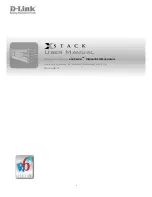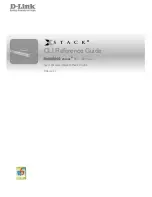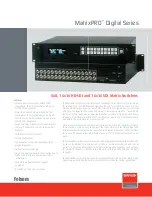
95
Chapter 4
Web Configuration & Operation
Router Port:
Select the checkbox on a given port to assign it as a router port. If MLD snooping cannot locate the MLD
querier, you can manually designate a port which is connected to a known MLD querier (i.e., a multicast router/switch).
This interface will then join all the current multicast groups supported by the attached router/switch to ensure that
multicast traffic is passed to all appropriate interfaces within the switch.
Fast Leave:
Enable fast leave function if the checkbox is ticked. When a leave packet is received, the switch immediately
removes it from a multicast service without sending a MLD group-specific (GS) query to that interface.
Throttling:
This field limits the maximum number of multicast groups that a port can join at the same time. When the
maximum number is reached on a port, any new MLD join reports will be dropped. By default, unlimited is selected.
Other allowed options are 1
~
10.
4.11.2.2 VLAN Configuration
This page is used to configure MLD Snooping for an interface.
VLAN ID:
Specify VLAN ID for MLD snooping.
Snooping Enabled:
Select the checkbox to enable snooping feature on an interface basis. When enabled, the switch will
monitor network traffic on the specified interface to determine which hosts want to receive multicast services.
MLD Querier:
Enable to join querier election in the VLAN. When enabled, the switch can serve as the MLDv2 querier in
the bidding process with other competing multicast routers or switches. Once it becomes querier, it will be responsible
for asking hosts periodically if they want to receive multicast traffic. When disabled, it will act as an IGMP non-querier.
Compatibility:
This configures how hosts and routers take actions within a network depending on MLD version selected.
Available options are “MLD-Auto”, “Forced MLDv1”and “Forced MLDv2”. By default, MLD-Auto is used.
RV:
The robustness variable (RV) allows tuning for the expected packet loss on a subnet. If a subnet is susceptible to
packet loss, this value can be increased. The RV value must not be zero and should not be one. The value should be 2 or
greater. By default, it is set to 2. The allowed range is 1
~
255.
QI (sec):
The Query Interval is the interval between IGMP General Query messages sent by the Querier. The default
Querier Interval is 125 seconds. The allowed interval range is 1
~
255 seconds.
QRI:
The Query Response Interval is the maximum amount of time that the IGMP router waits to receive a response to a
General Query message. The QRI applies when the switch is acting as the querier and is used to inform other devices of
the maximum time this system waits for a response to general queries. By default, RQI is set to 10 seconds. The allowed
range is 10 – 31744 tenths of a second.
LLQI:
The Last Listener Query Interval sets the interval that waits for a response to a group-specific or group-and-source
specific query message.
URI:
The Unsolicited Report Interval is the amount of time that the upstream interface should transmit unsolicited IGMP
reports when report suppression/proxy reporting is enabled. By default, URI is set to 1 second. The allowed range for URI
is 0
~
31744 seconds.
Click the “Add New MLD VLAN” button to add a new entry.
Содержание GSW-3208M2
Страница 1: ...1 GSW 3208M2 Managed Gigabit Ethernet Switch ...
Страница 144: ...This page is intentionally left blank Date Version Description 2015 8 26 0 9 Preliminary version ...
Страница 145: ......
















































